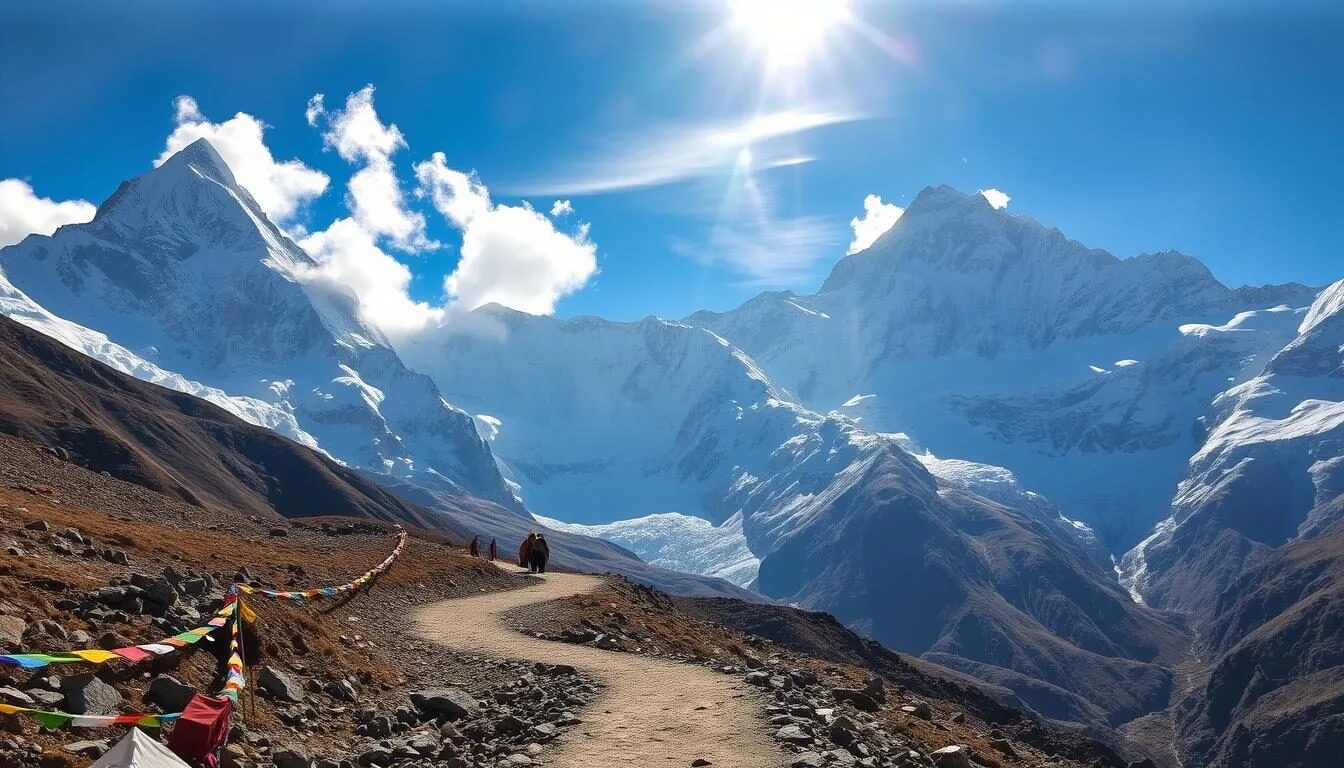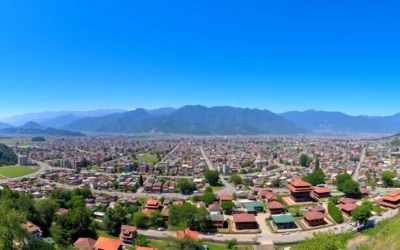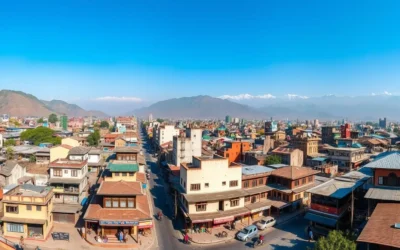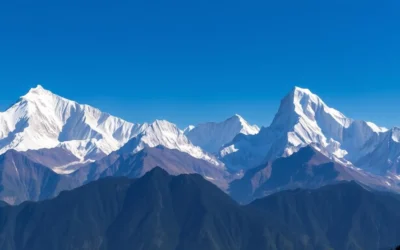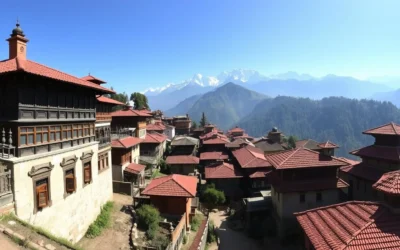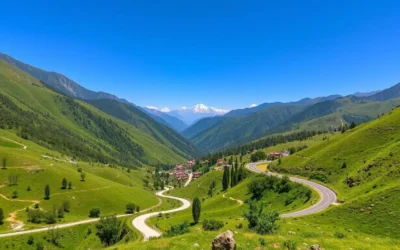✓ Accommodations✓ Flights✓ Rental Cars✓ Tours & Activities
Thousands of hikers worldwide are drawn to the Everest Base Camp Trek, a journey considered a rite of passage for trekkers. The allure of Mount Everest, the world’s highest peak, is undeniable.
Welcome to the breathtaking Khumbu region, home to unforgettable experiences and majestic Himalayan landscapes. Whether you’re an experienced trekker or looking to immerse yourself in nature, Khumbu has something for every adventure seeker.
This comprehensive guide will take you through the top experiences in Khumbu, from trekking to Everest Base Camp to exploring charming Sherpa villages. Get ready to discover why the Khumbu region is considered one of the most spectacular destinations on earth.
Discovering the Khumbu Region
As you venture into the heart of the Himalayas, the Khumbu region unfolds its majestic beauty. This region is not just a destination; it’s an experience that combines breathtaking natural landscapes with rich cultural heritage.
The Gateway to Everest
The Khumbu region serves as the gateway to Mount Everest, offering visitors their first glimpse of the majestic Himalayan range. Located in northeastern Nepal, Khumbu is home to the famous Sherpa people, whose culture and mountaineering expertise have become legendary worldwide. Most journeys into Khumbu begin with a flight to Lukla’s Tenzing-Hillary Airport, known for its thrilling approach.
The region’s altitude ranges from approximately 2,845m at Lukla to 8,848m at the summit of Mount Everest, requiring proper acclimatization for all visitors.
Sagarmatha National Park
Sagarmatha National Park, a UNESCO World Heritage Site, encompasses much of the Khumbu region, protecting its unique alpine ecosystems and endangered wildlife. The park features dramatic landscapes, from deep valleys and glacial moraines to the towering peaks of the Everest massif. To visit Sagarmatha National Park, you’ll need to obtain an entry permit.
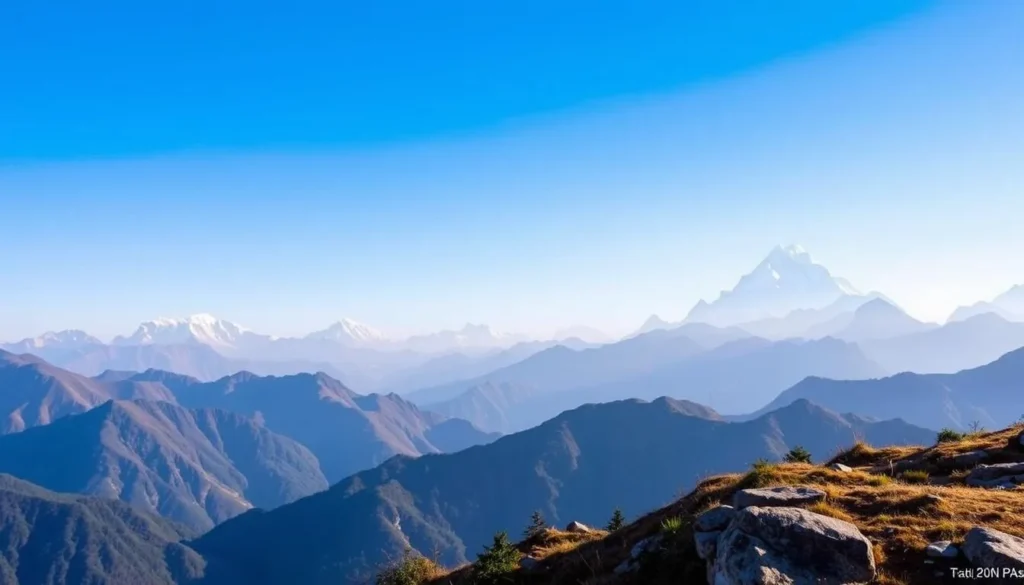
The Everest Base Camp Trek, which lies within the park, is one of the most famous treks in Asia, attracting adventurers from around the world.
Everest Base Camp Trek: The Ultimate Adventure
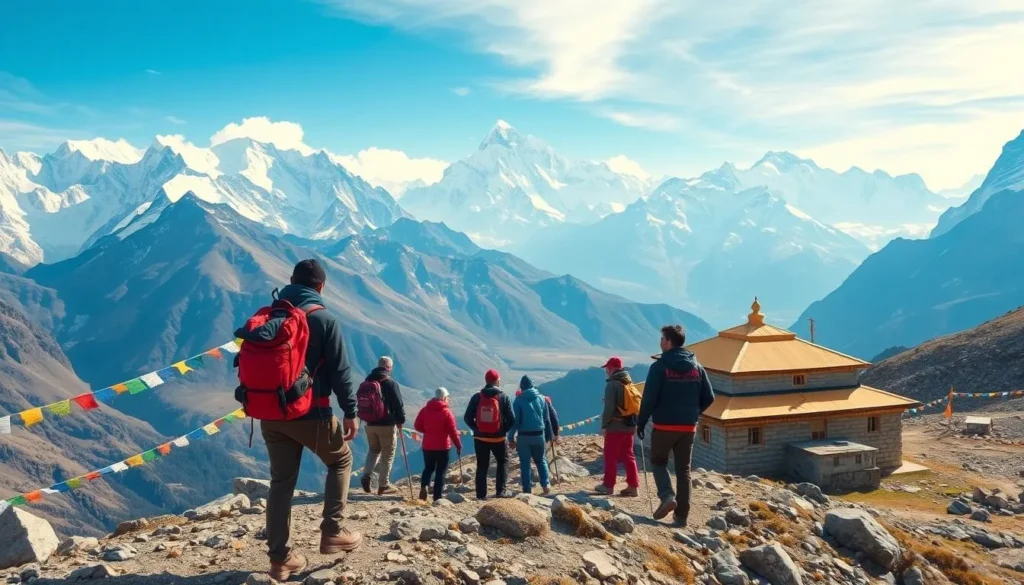
For those seeking the ultimate Himalayan experience, the Everest Base Camp trek stands out as a premier adventure. This trek is not just about reaching a destination; it’s about the journey through breathtaking landscapes, rich cultural experiences, and the personal challenge of trekking at high altitudes.
The Classic EBC Route
The classic Everest Base Camp route begins in Lukla and follows the Dudh Kosi river valley before climbing to Namche Bazaar, a crucial acclimatization point. From there, the trail continues through Tengboche with its famous monastery, then on to Dingboche, Lobuche, and finally Gorak Shep, the last settlement before Everest Base Camp.
What to Expect on the Trail
You’ll experience dramatic changes in landscape, from lush forests in the lower regions to rocky, glacial terrain as you approach base camp. The trek typically takes 12-14 days round trip, covering approximately 80 miles with daily hiking sections of 8-10 miles, allowing for proper acclimatization to the increasing altitude.
Reaching Base Camp: The Pinnacle Moment
Reaching Everest Base Camp at 5,364m is a profound moment for most trekkers, offering close-up views of the Khumbu Icefall and the realization that you’re standing at the starting point for Everest summit expeditions. The sense of achievement and the breathtaking views make the challenge worthwhile.
The Everest Base Camp trek requires good physical fitness but doesn’t demand technical climbing skills, making it accessible to determined hikers with proper preparation. With guided tours available, you can enjoy this adventure with the support of experienced guides.
Explore Namche Bazaar: The Sherpa Capital
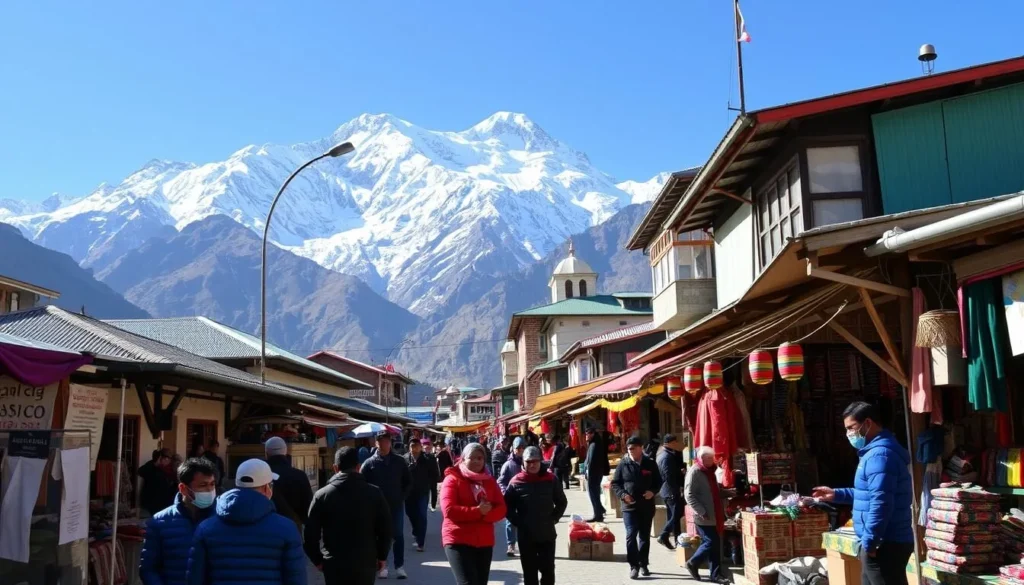
Namche Bazaar, perched at 3,440 meters, is the cultural and commercial heart of the Sherpa community. As you explore this vibrant town, you’ll discover a unique blend of traditional Sherpa culture and modern amenities.
Shopping and Cultural Experiences
Namche Bazaar is a treasure trove of cultural experiences and shopping delights. You can visit the Sherpa Culture Museum to learn about the history and traditions of the Sherpa people. The town is also known for its colorful Saturday market, where traders from Tibet and the lower Khumbu region gather to exchange goods. You can find everything from trekking gear to authentic local crafts, making it a great place to pick up souvenirs or gear up for the rest of your Everest Base Camp trek.
Acclimatization Day Activities
During your acclimatization day in Namche Bazaar, you can engage in various activities to make the most of your stay. A hike to the Everest View Hotel offers panoramic views of the Himalayas, including Mount Everest. You can also visit the nearby villages of Khumjung and Khunde, known for their traditional customs and stunning landscapes. After a day of exploring, you can relax at one of the local bakeries or cafes, enjoying a cup of coffee or a fresh pastry.
Namche Bazaar is more than just a stop on your trekking route; it’s an experience that allows you to immerse yourself in the local culture and altitude of the Himalayas. With its rich history, vibrant market, and breathtaking views, Namche Bazaar is a highlight of any trip to the Everest Base Camp.
Visit Tengboche Monastery
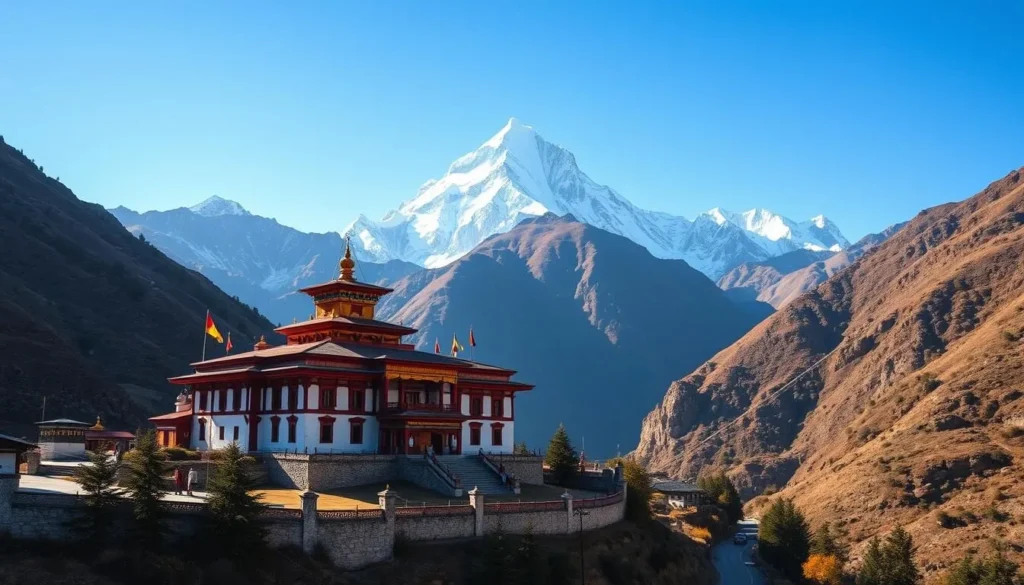
As you trek towards Everest Base Camp, a visit to Tengboche Monastery is a must for its spiritual significance and breathtaking views. This sacred site, also known as Dawa Choling Gompa, is the largest Buddhist monastery in the Khumbu region and a pivotal stop for trekkers.
Buddhist Traditions and Ceremonies
Tengboche Monastery is a spiritual center for the Sherpa community, offering a serene and peaceful atmosphere. You can witness daily prayer ceremonies where monks chant and play traditional instruments, creating a deeply moving spiritual experience. The monastery’s grounds are adorned with beautiful mani stones and stupas, reflecting the rich religious heritage of the region.
Panoramic Mountain Views
From Tengboche Monastery, you’ll be treated to one of the most spectacular panoramic views in the Himalayas. The backdrop includes majestic peaks such as Mount Everest, Lhotse, Nuptse, and the perfectly shaped Ama Dablam. Many trekkers time their visit to coincide with the Mani Rimdu festival, usually in November, when monks perform sacred dances and rituals celebrating the triumph of Buddhism.
The monastery’s resilience is evident in its history; it was rebuilt after being destroyed by an earthquake in 1934, symbolizing the spiritual continuity of the Sherpa people. Your visit to Tengboche Monastery will be a memorable experience, blending spirituality, culture, and natural beauty.
Khumbu, Nepal: Best Things to Do – Top Picks for Alternative Treks
Beyond the popular Everest Base Camp trek, the Khumbu region offers several alternative treks that promise equally breathtaking experiences. If you’re looking to explore beyond the standard route, consider these top picks for a unique adventure.
Gokyo Lakes Trek
The Gokyo Lakes Trek is a spectacular journey to a series of six turquoise lakes nestled at over 4,700 meters. Considered sacred by both Hindus and Buddhists, these lakes are a highlight of the trek, especially during the August pilgrimage season.
From Gokyo Ri (5,357m), you’ll enjoy panoramic views considered among the best in Nepal, with clear sightings of four 8,000m peaks: Everest, Lhotse, Makalu, and Cho Oyu.
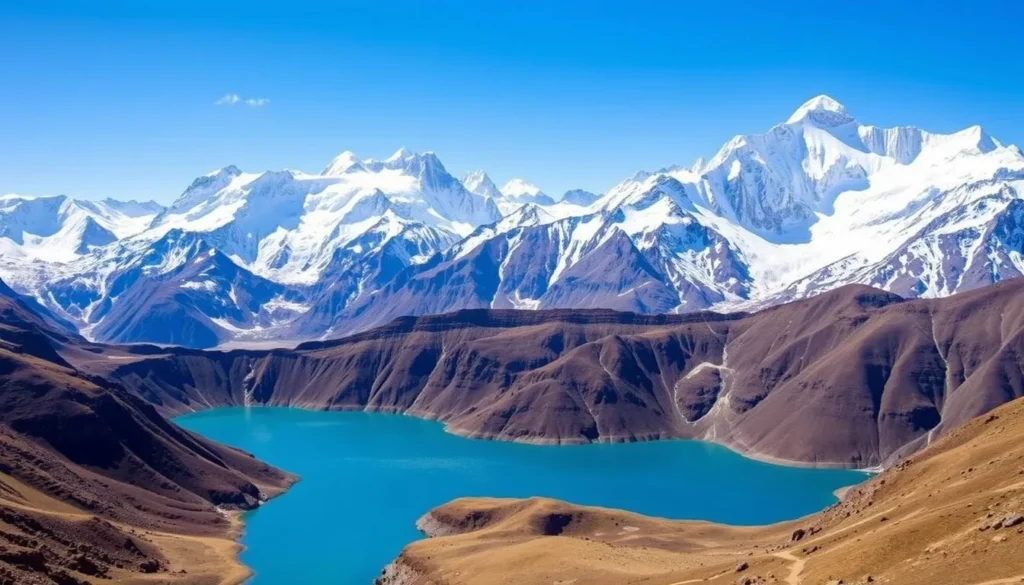
Three Passes Trek
The Three Passes Trek is the ultimate Everest region circuit, crossing three high passes above 5,000m: Kongma La, Cho La, and Renjo La. This demanding trek incorporates both the Everest Base Camp and Gokyo Lakes routes, offering the most comprehensive experience of the Khumbu region.
You’ll witness diverse landscapes and breathtaking views, including the Herculean vistas of Makalu from the Kongma La pass and the turquoise lakes of the Gokyo Valley seen from the Gokyo Ri pass.
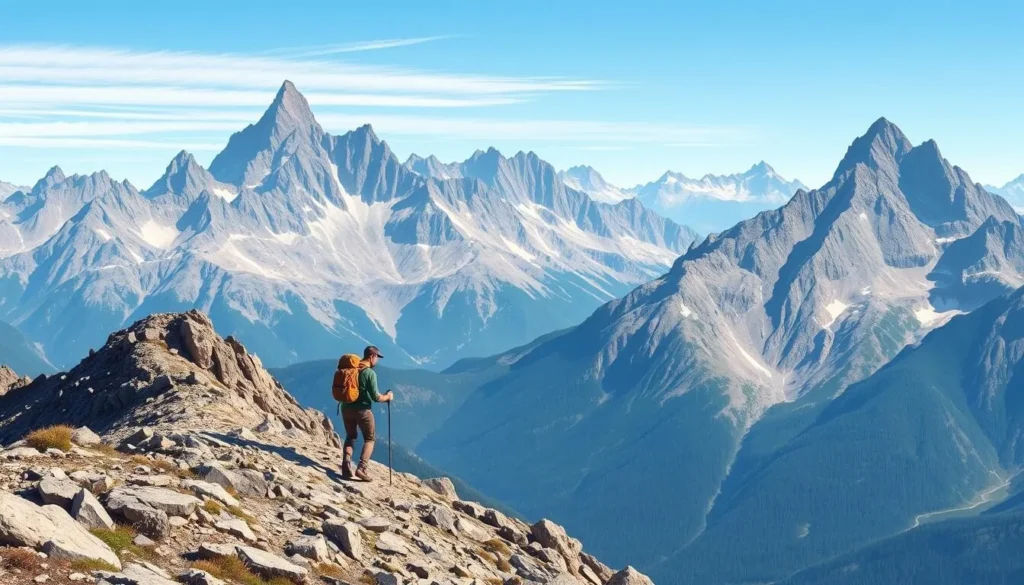
Ama Dablam Base Camp Trek
The Ama Dablam Base Camp Trek leads you to the foot of one of the most beautiful mountains in the world, known for its distinctive shape. This trek offers spectacular close-up views of Ama Dablam while still providing distant vistas of Mount Everest.
Less crowded than the main Everest Base Camp route, the Ama Dablam Base Camp Trek is an ideal choice for those seeking a more secluded yet equally breathtaking experience.
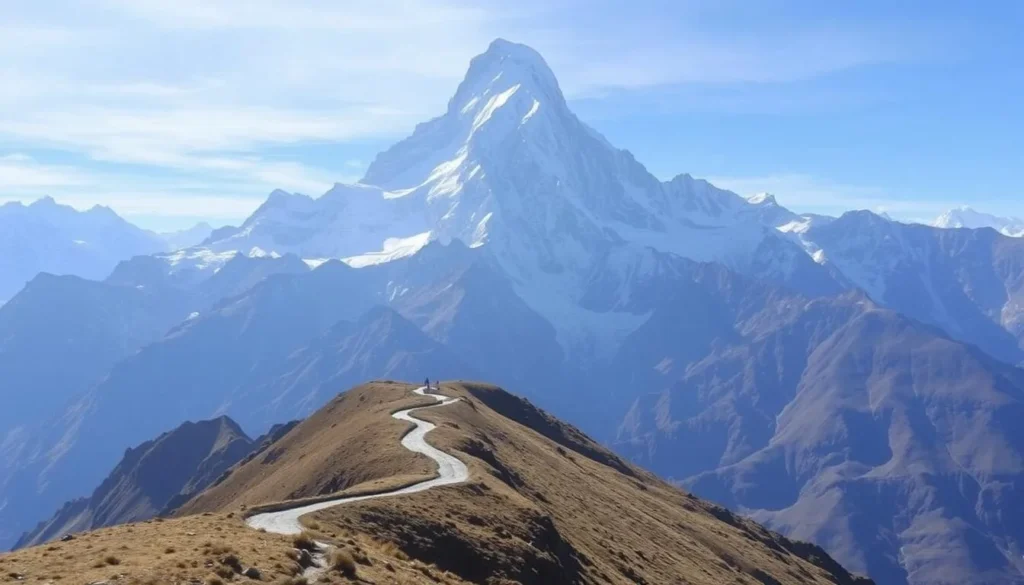
Conquer Kala Patthar for Unrivaled Everest Views
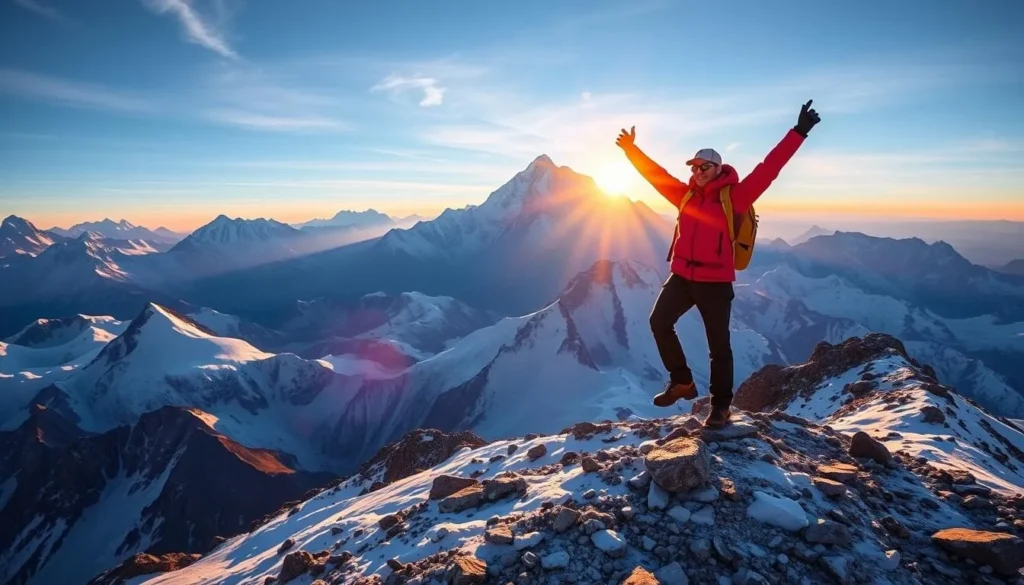
Kala Patthar, translating to “Black Rock,” offers the most breathtaking views of Everest and the surrounding Himalayas. At 5,550 meters (18,208 feet), this viewpoint is a challenging yet rewarding detour above Gorak Shep.
Sunrise Hike Logistics
To witness the unforgettable sunrise over Everest, many trekkers choose to ascend Kala Patthar before dawn. The hike involves a 500-meter ascent that typically takes about 2 hours of steady hiking. You’ll need to start around 4:00 AM with headlamps, warm clothing, and determination.
Photography Tips for Mountain Panoramas
From the summit, you’ll enjoy a 360-degree panorama that includes Mount Everest, Nuptse, Lhotse, Pumori, and the sprawling Khumbu Glacier. Photographers should bring wide-angle lenses to capture the expansive views and telephoto options for detailed shots of Everest’s summit. The golden hours of sunrise and sunset provide the best photography conditions, with warm light creating dramatic shadows.
Explore Sherpa Villages and Culture
The Sherpa villages in the Khumbu region are a treasure trove of cultural experiences, waiting to be explored. As you trek through this beautiful region, you’ll have the opportunity to visit traditional Sherpa villages and experience their rich cultural heritage.
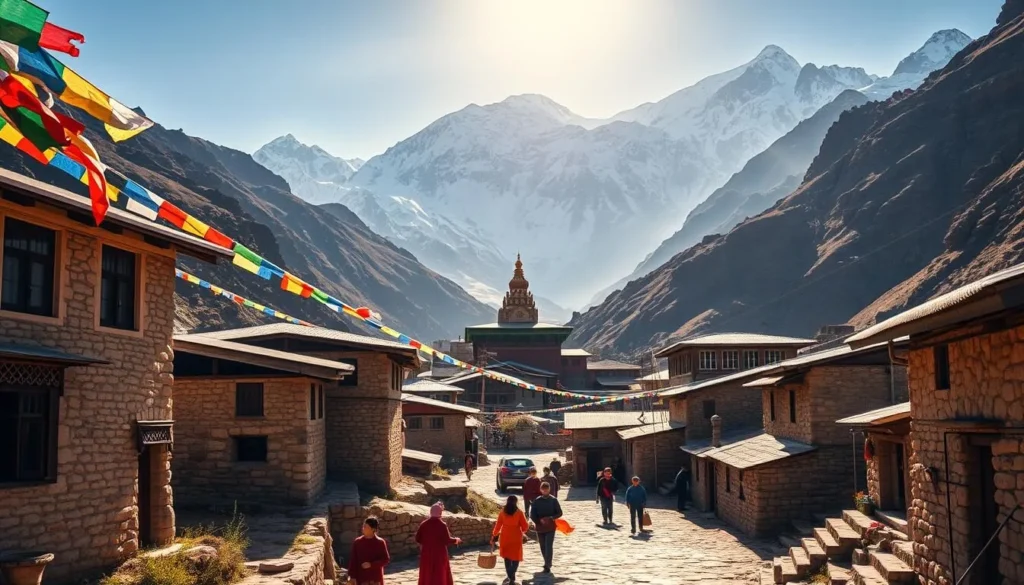
Khumjung and Khunde Villages
Khumjung and Khunde, twin villages located in a beautiful valley near Namche Bazaar, offer an authentic glimpse into traditional Sherpa life. Khumjung is home to the famous “Hillary School,” established by Sir Edmund Hillary in 1961 as part of his lifelong commitment to the Sherpa people. The village also houses a small monastery that claims to possess a “yeti scalp,” a curious attraction that draws visitors interested in Himalayan folklore.
Nearby Khunde features a hospital also established by the Hillary Trust, which provides vital healthcare services to the local population. You’ll notice traditional Sherpa architecture with stone houses featuring small windows, colorful prayer flags, and beautifully carved wooden details.
Traditional Customs and Festivals
Sherpa culture is deeply influenced by Tibetan Buddhism, evident in the many mani walls, prayer wheels, and chortens that dot the landscape. If your visit coincides with local festivals like Losar (Tibetan New Year) or Mani Rimdu, you’ll witness colorful ceremonies, traditional dances, and celebrations that have remained largely unchanged for centuries.
| Village | Main Attractions | Cultural Significance |
|---|---|---|
| Khumjung | Hillary School, Yeti Scalp | Traditional Sherpa Life |
| Khunde | Hillary Trust Hospital | Healthcare and Community |
| Namche Bazaar | Syangboche Airport, Everest Viewpoints | Gateway to Everest Base Camp |
As you explore these Sherpa villages, you’ll gain a deeper understanding of the region’s rich cultural heritage and the resilient people who call it home. The experience will enrich your trek to Everest Base Camp and leave you with lasting memories of the Sherpa culture.
Visit Gokyo Ri and Ngozumpa Glacier
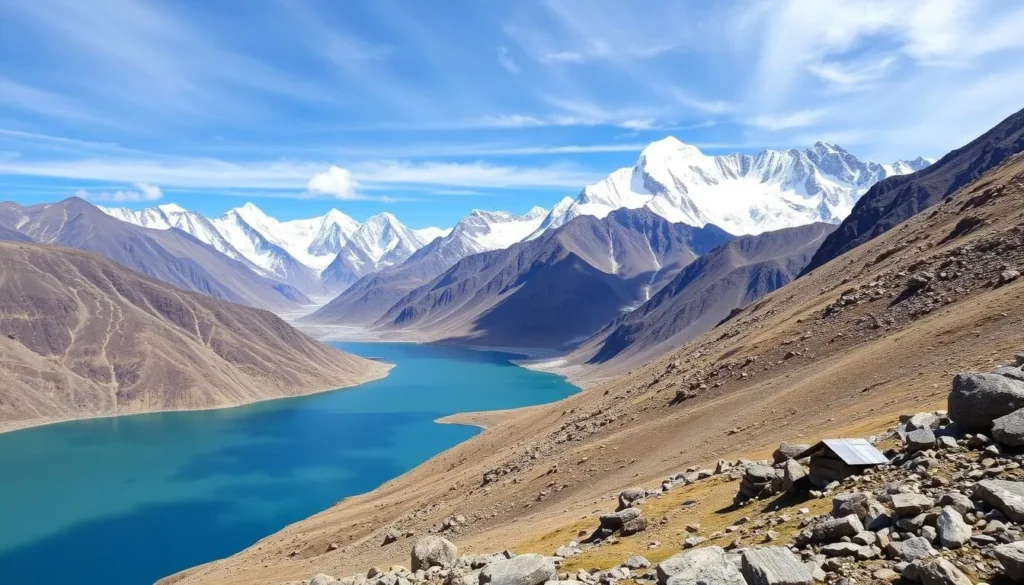
As you venture into the Khumbu region, a visit to Gokyo Ri and Ngozumpa Glacier is a must for any trekker seeking breathtaking Himalayan vistas. The Gokyo Valley offers one of the most spectacular alternative experiences in the Khumbu region.
The Sacred Lakes of Gokyo
The Gokyo Valley is centered around a series of six turquoise glacial lakes—the highest freshwater lake system in the world. Gokyo Ri, a peak rising to 5,483 meters, provides what many trekkers consider an even more impressive panorama than Kala Patthar, with views of four 8,000-meter peaks: Everest, Lhotse, Makalu, and Cho Oyu. The sacred lakes of Gokyo hold special religious significance for both Hindus and Buddhists, with pilgrims arriving in August to perform ritual bathing ceremonies.
The third lake, Dudh Pokhari, is the largest and most beautiful, with the small settlement of Gokyo situated on its eastern shore, providing comfortable teahouse accommodations for trekkers.
Trekking on Nepal’s Longest Glacier
The massive Ngozumpa Glacier, Nepal’s longest at 36 kilometers (22 miles), creates a dramatic landscape of ice formations, glacial pools, and moraine ridges that you can explore on guided walks. Trekking on the glacier requires caution and proper guidance, as the terrain can be unstable with hidden crevasses, but offers a unique opportunity to witness the powerful forces that have shaped the Himalayan landscape.
The glacier is retreating due to climate change, creating an increasing number of glacial lakes that scientists monitor closely for potential outburst floods. From Gokyo, adventurous trekkers can continue over the challenging Cho La Pass to connect with the main Everest Base Camp trail, creating a spectacular circuit of the Khumbu region.
Best Time to Visit Khumbu Region
Understanding the seasonal variations in the Khumbu region is essential for a safe and enjoyable trek. The weather conditions significantly impact both trekking safety and the quality of mountain views.
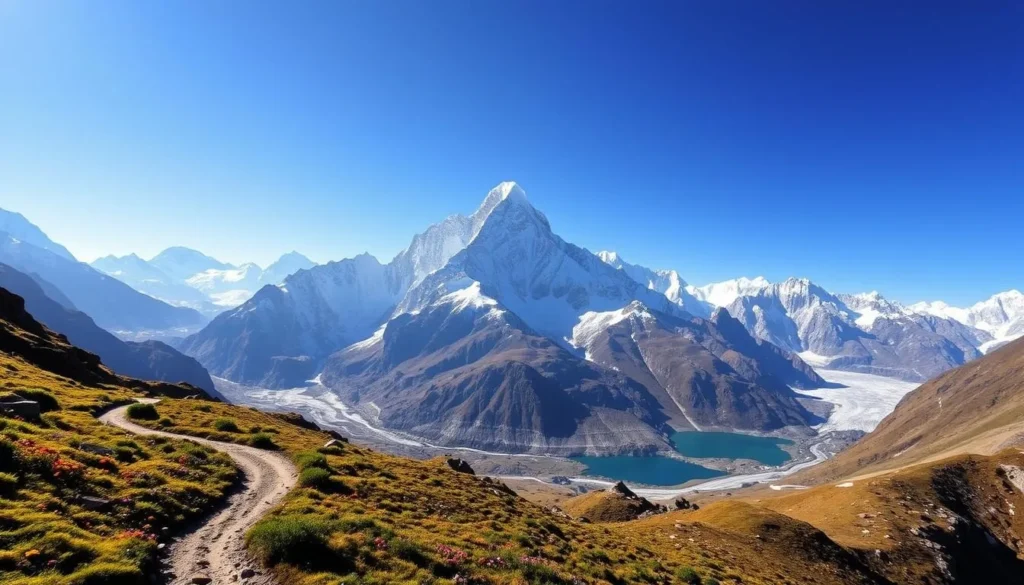
Spring Season (March-May)
Spring is one of the two prime trekking seasons, offering warmer temperatures, longer days, and spectacular rhododendron blooms that add vibrant color to the lower elevations. April is particularly popular as it provides stable weather, good visibility, and the opportunity to witness expedition teams preparing for Everest summit attempts from Everest Base Camp.
Autumn Season (September-November)
The autumn season is considered by many to be the absolute best time for trekking in Khumbu, with crystal-clear skies offering the most reliable mountain views. October stands out as the peak month with a perfect balance between comfortable temperatures and exceptional visibility, though it also brings the highest number of fellow trekkers on the trails.
Winter and Monsoon Considerations
Winter offers the clearest air and fewest crowds but comes with significant challenges, including very cold temperatures and potential snow blocking the higher passes. The summer monsoon season is generally avoided due to rain, mud, and clouds that obscure the mountain views. Each season offers a different perspective on the Khumbu region, from the lush greenery of spring to the crisp clarity of autumn.
Timing your visit to the Khumbu region is crucial for the best experience. You should consider the weather conditions and your preferences when planning your trek to Everest Base Camp. Whether you choose spring, autumn, or another season, being prepared for the conditions will ensure a memorable trip.
Practical Tips for Khumbu Adventures
To make the most of your Khumbu trek, being aware of the practical tips can make a significant difference. Trekking in this region is not just about reaching the destination; it’s about the journey, the people you meet, and the experiences you have along the way.
Altitude Sickness Prevention
Altitude sickness is a significant risk in the Khumbu region, particularly on the Everest Base Camp trek. To prevent it, follow the “climb high, sleep low” rule and allow for proper acclimatization days. Stay hydrated by drinking at least 3-4 liters of water daily and avoid alcohol. Consider consulting your doctor about altitude medications like Diamox before your trip.
Accommodations Along the Trails
Accommodations along the main trekking routes are primarily teahouses, offering basic rooms and home-cooked meals. The quality of these teahouses generally decreases as you ascend higher. Most provide shared bathrooms and common dining areas where trekkers gather.
Packing Essentials for Himalayan Trekking
Packing the right gear is crucial for a successful trek. Essentials include layers of moisture-wicking and insulating clothing, quality hiking boots, a good sleeping bag, and a comprehensive first-aid kit. Don’t forget sun protection, a headlamp, water purification methods, and snacks to supplement teahouse meals.
By being prepared and aware of the challenges, you can have a safe and enjoyable trekking experience in the Khumbu region.
Conclusion: The Unforgettable Khumbu Experience
As you conclude your journey through the Khumbu region, the memories of majestic mountains and warm Sherpa hospitality will stay with you forever. The experiences in Khumbu, from standing at Everest Base Camp to witnessing sunrise from Kala Patthar, are truly awe-inspiring. Beyond the famous trails, moments like a warm conversation with a Sherpa family or the stillness of a star-filled Himalayan night leave a lasting impression. Whether you choose the classic Everest Base Camp trek or an alternative route, Khumbu will challenge you physically and reward you spiritually.
Your Khumbu adventure will leave you with a profound appreciation for the human spirit and the natural world’s grandeur. The region offers an unparalleled adventure that combines breathtaking natural beauty with rich cultural experiences.
The above is subject to change.
Check back often to TRAVEL.COM for the latest travel tips and deals.
